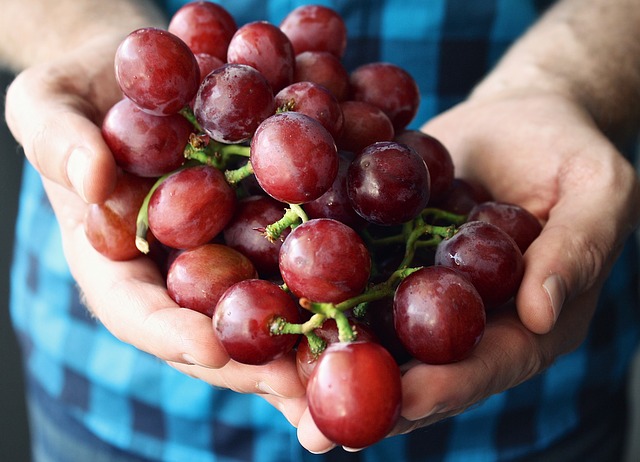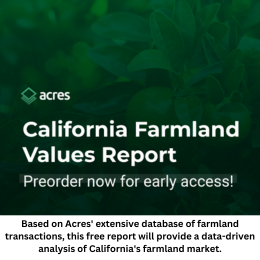April 25, 2019
CONSULTANT’S CORNER: Please enjoy this month’s issue of Consultant’s Corner — where the industry experts from HighQuest Consulting provide insight on the latest activities in the ag investing and agtech space.
By Philippe de Lapérouse and Mark Zavodnyik, HighQuest Consulting
At the annual Global AgInvesting conference held in New York in early April, the need to be more aligned with the changing food preferences and trends amongst consumers, particularly millennials, was a common theme addressed by investors, including those investing in farmland.
Institutional investors allocating capital across the value chain recognize that their strategies need to be aligned with changing consumer consumption trends. A number of themes relating to changing consumer preferences which are driving change across the food and ag sector were discussed during the conference.
Traceability
More and more consumers are asking the question, “Where does my food come from?” Consumer interest in and awareness of food production methods is heightened as never before, particularly amongst younger generations.
A number of shifts in consumer concerns and motivations explain this increased awareness of where food comes from and how it was produced and shipped, including concerns over sustainable production methods, clean labeling (or lack thereof), labor conditions, animal welfare, environmental impact, etc. Whether for health concerns or social aspirations, consumers are increasingly attaching values and personal identity to their purchasing decisions and the foods they eat.
The desire for increased transparency over how food gets to the plate is having a ripple effect across the entire supply chain. Increasingly, food companies are using branding strategies and promotions to demonstrate their commitment to these issues. This can entail having their products assume the mantle of recognized certification schemes such as Animal Welfare Approved, Fair Trade Certified. and others. Food manufacturers are also re-formulating well established brands to reduce or eliminate altogether artificial preservatives, colors, and sweeteners in their products.
Additionally, in response to recent cases of food borne illness involving fresh produce, companies demonstrating control over the origin of their products are better positioned to manage and in certain cases contain future outbreaks of food borne illnesses which can provide them with a competitive advantage in terms of their responsiveness to customer concerns.[1] New technologies such as RFID sensors that track crops from the field, throughout production, all the way to the store are being used to promote trust with consumers and demonstrate a commitment to product traceability.[2]
Demand for organic as part of a focus on health and wellness
Similar to their interest in knowing where their food comes from and how it was produced, consumers are increasingly focused on personal health and how their food decisions affect their overall wellness.
This trend is tied to sustainable production practices such as USDA-certified organic as well as less-quantifiable standards such as “local” and “fresh”. This trend is particularly relevant amongst younger consumers: 84 percent of millennials report that a product’s “freshness” is most likely to influence their purchasing choices and 41 percent indicate that they would pay a premium for freshness.[3] Not only are younger consumers attracted to food products that are presented as healthier, they also attach a higher value to them. Amongst millennials, 68 percent indicate that they are willing to pay more for organic foods.[4]
Not surprisingly, investors have taken note of the willingness of consumers to pay more for organic foods. Investors allocating capital to real assets (farmland) are increasingly pursuing operating strategies that take into account consumer trends for how food is produced, transported, and processed in order to take advantage of the increased revenue associated with premium products, like organic-certified foods.
The trend towards healthy eating has been picking up steam over the past decade. Consumers seeking healthy options tend to favor smaller producers offering “local” options in favor of established global brands. According to Wells Fargo, the top 25 food manufacturers lost $18 billion in revenues from 2012-2017, while smaller food brands were responsible for 46 percent of industry growth during those years.[5] To offset lost revenue, large food manufacturers are acquiring smaller, more nimble local brands in order to establish a stronger connection and level of trust with younger consumers.[6]
Impact on the Supply Chain
As part of a general trend towards following a healthier lifestyle, consumer demand for fresh foods (fruits, vegetables, meat, fish, etc.) vs. processed foods is growing. This is particularly true amongst millennials, who consume substantially more fresh produce than did their parents and grandparents.[7] Retail grocers have taken notice, with 85 percent of retailers reporting their intention to expand the amount of shelf space offering fresh foods.[8]
Not only is demand for fresh foods increasing, the logistics chain used to deliver it to consumers is experiencing change as the volume of food that is not shelf-stable needs to be delivered to consumers within a relatively short period of time. The shift amongst millennials away from the suburbs to living in urban areas creates additional challenges for producers delivering their products from farm to table.
To meet these challenges, companies across the food value chain are evaluating the new cold and frozen chain logistic technologies in order to deliver a short shelf-life foods to retail grocery stores and direct to consumers’ homes.
The increased popularity of home-delivery meal kits and grocers such as Blue Apron, FreshDirect, and Amazon Fresh is likely to attract more innovation into this space.
Technology is expected to be the key factor in providing solutions to meet changing consumer preferences and expectations. At the grower level, technology is enabling farmers to more efficiently manage their resources while produce can be tracked throughout the supply chain, providing increased traceability for consumers. During production, technology is enabling certification bodies to provide an audit trail of processes and reduce incidences of fraud.
Given the growing demand and premium paid for organic foods, ensuring a reliable, traceable supply chain is extremely important. All of this adds up to providing knowledge and empowers consumers more than ever to pose the question, “Where does my food come from?” and expect a detailed response.
ABOUT THE AUTHORS
Philippe de Lapérouse is a managing director at HighQuest Partners, a leading global strategy advisory and consulting firm. HighQuest advises strategic players operating in and financial investors allocating capital to the global food and agricultural value chains on making informed decisions on strategy and resource allocation. Lapérouse chairs the Global AgInvesting conference series. He can be reached in St. Louis at +1 314.960.1632 or via email at pdelaperouse@highquestpartners.com.
Mark Zavodnyik is project manager for HighQuest Partners where he leads the day-to-day execution of consulting projects, advising clients on strategy and investment decisions across the global agricultural value chain. Previously, he was the lead tropical oils trader at AAK USA with responsibility for all sourcing, trading, and risk management in the United States. Zavodnyik has spoken at industry conferences on the efforts the industry has undertaken to make palm oil more environmentally sustainable. He can be reached at +1.574.274.3099 or mzavodnyik@highquestpartners.com.
[1] https://www.growingproduce.com/fruits/how-agriculture-is-growing-in-age-of-the-connected-consumer/
[2] https://www.forbes.com/sites/danielnewman/2018/05/14/top-six-digital-transformation-trends-in-agriculture/#26cebf6eed2e
[3] https://wholesale.wf.com/food_for_thought/generational-preferences-impact-the-food-industry/
[4] https://foodindustryexecutive.com/2017/04/what-millennial-consumers-expect-from-the-food-industry/
[5] https://agfundernews.com/changing-consumer-preferences-will-impact-the-farm.html
[6] https://www.forbes.com/sites/juliabolayanju/2019/02/16/top-trends-driving-change-in-the-food-industry/#97981cb60633
[7] https://wholesale.wf.com/food_for_thought/generational-preferences-impact-the-food-industry/
[8] https://www.growingproduce.com/fruits/how-agriculture-is-growing-in-age-of-the-connected-consumer/

Let GAI News inform your engagement in the agriculture sector.
GAI News provides crucial and timely news and insight to help you stay ahead of critical agricultural trends through free delivery of two weekly newsletters, Ag Investing Weekly and AgTech Intel.




